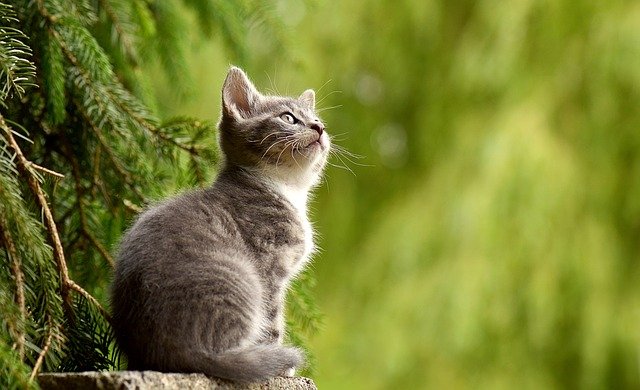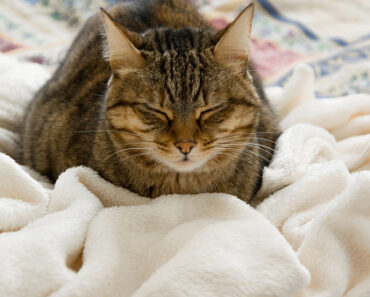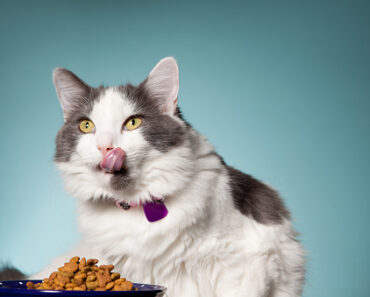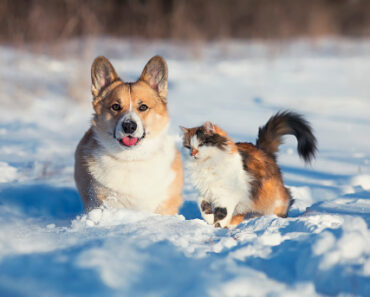
Not to worry, but all of these seem to be symptoms of one or more disorders in cats. These are often related to boredom or stress.
It is therefore very important to pay special attention to them in order to offer the cat a stimulating, reassuring and comfortable environment. With the help of a veterinarian and by trying to understand your cat, it is possible to overcome these disorders that cause a lot of material damage and make both the cat and its owner unhappy.
The reasons
It is essential to treat behavioural problems in cats as soon as they are noticed: punishing your pet is not very useful, especially after the fact. For it, all these rubles are only the manifestation of a discomfort, a willingness to take over, a discomfort due to a change of environment. But all this needs to be educated.
There are various reasons for these disorders such as :
. reasons related to the environment :
if the cat starts to urinate next to the litter box, there is a reason, he is just trying to mark a territory. Contrary to popular belief, he does not try to “play smart” with his owner, he tells it by this extraordinary gesture where his territory is or that something is wrong such as a litter box too close to his food, a litter box that is too dirty, a litter box left in an open area or in a drafty place. Since cats like their privacy, they need a delimited and respected place.
Similarly, if you move furniture, change the paintings in a room, add new objects, new odors will settle and disturb it. The cat is an animal full of habits and he wants to keep them.
. psychological reasons :
these are reasons that we don’t always see at first glance. Indeed, these reasons are nothing more or less than stress: the cat perceives any change in its habits, whether it is around the physical environment or in the family atmosphere. This can disturb it and he then expresses his discomfort in his own way. Normally, everything simply translates into a small puddle of urine that will aim to mark its territory again. The important thing (according to the cat) is to leave a mark in the environment to affirm its presence and identity. We often find this kind of behavior when a new animal arrives in the home and comes to “compete” with the cat, when guests are too noisy and annoy “mooooosieurs”, when a tragedy occurs in a family such as a death and the atmosphere is affected. Whatever the change in his routine, the cat will notice it and it will stress it out.
Other sources of stress are present in the cat that give it behavioural problems. We can cite, in particular, in the ¾ cases, a certain lack of activity but cohabitation with other animals does not always help either and it is often small “spikes” that can be observed between the cat and his new “companions”.
A cat, anxious by nature (there are some), can see his stress increase when he knows that another cat is prowling around, he no longer feels comfortable and wants to defend his territory, his hunting instinct puts it on constant alert and disrupts his routine. Also, certain diseases (hormonal, immune, neurological disorders) can influence his behaviour. Finally, we also note that punishments increase his stress.
Symptoms of these disorders
Cats express their stress and discomfort in different ways, which can be quickly deciphered in order to better manage them.
The first is aggressiveness: some cats have “aggressive outbursts” for no apparent reason and start jumping on anything that moves, especially their owner. They attack the calves. The cat means that it wants to play with the person in question and that it needs to be taken care of.
But this aggressiveness can also have causes regarding its food: it can happen that the access to its food is not so easy and this forces it or the cat competes with other animals regarding its food.
In the same vein, it is important to know that a cat must consume at least 1/3 of its portion in proteins because it is above all a carnivore: the quality of these proteins must be monitored because a diet of low or poor quality can lead to a protein deficiency and therefore cause behavioral problems because the cat will feel these deficiencies.
The important thing is to offer it healthy, fresh food and if possible to be able to fraction it during the day. His aggressiveness can also come from a concern with his health: in case of doubt, the cat must be dewormed regularly because worms come to disturb the cat’s digestion and inconvenience it. Do not hesitate to consult a veterinarian in this situation to be sure.
Another symptom is urine out of the litter box: this singularly unpleasant situation indicates two possibilities, either the cat wants to relieve itself out of the litter box because it does not suit it (cleanliness, location, content of the litter box), or the animal wants to mark his territory. The origin of this behavior must be circumscribed: in concrete terms, if the cat urinates on horizontal surfaces, it wishes to relieve itself elsewhere than in the litter box (it takes the same position as when it is in the litter box). The cat may then suffer from urinary problems and must consult a veterinarian or the litter box may not be suitable for the reasons mentioned above. But if the cat urinates on vertical surfaces such as a piece of furniture, a wall up to 20 centimeters high, then he wants to mark his territory (by standing up and urinating as far away as possible).
Fighting for territory with another cat is also a symptom of these behavior disorders: in fact, by incorporating a new cat into its usual environment, the cat will react because it will force it to share its food, housing, litter box and resting areas as well. This situation will stress it to the highest degree, it is necessary to react as quickly as possible before one cat gets the upper hand over another by forbidding it any access to its needs or if one of them is aggressive towards the other.
Another source is the problem during a car trip: it is an uncomfortable situation for the cat that will stress it: he is locked up in a cage, lifted abruptly from the sil, placed in a noisy environment and whose odors he does not control: in any case, the cat can meow, get agitated, shake, hypersaliver but also have nausea and even vomit.
Many other symptoms can be noticed when a cat experiences behavioral problems: there is a form of self-defense that is created for example where the cat defends itself against any approach or because it does not like to be manipulated. Cuddling and holding the cat learns, you have to get the cat used to it gradually.
Another source of a disorder can be a kind of state of confusion where the cat loses its bearings because the alarm clock has sounded suddenly or because the room it is in contains substances that irritate it (drugs, cigarettes, incense). It even happens that the cat presents disorders like humans, namely schizophrenia.
How to soothe your cat?
The most important thing is to commit yourself to improving the cat’s environment by responding to its various needs: space, food, play, stimulation, predation, etc.
It is very important that the cat feels confident and secure: the cat lives in a world that must provide it with something to climb, show, hide and hide from others if necessary. That’s why we often recommend the purchase of a cat tree to meet all these needs. We can also add elements so that it hides and “plays” not to be seen as big pots for plants, low shelves, cardboard boxes.
As far as sociability is concerned, the cat is an individual animal and its degree of tolerance towards other cats or even humans varies according to the cat: we must therefore respect its need for independence and the solitude it needs at times thanks to a place dedicated solely to it, a place where it can at leisure move to its litter box, its food, drink water.
The cat is an animal that needs a lot of sensory stimulation, be it olfactory, sensory or visual: this is how the cat likes to perch in order to admire its environment and react according to it and if possible on a scratching surface so that it can make its claws (cat trees with several trays offer this kind of possibilities). Similarly for food, it is good to be able to vary the texture of its food.
Above all, he likes to play because it awakens his perfectly preserved hunting instinct: games that make noise, that vibrate, that bounce are very much in his favor. It should be noted that the cat likes to play with a human rather than alone.
Pheromonotherapy
It is a new technology that aims to solve behavioral problems, especially in cats. It is based on the pheromones emitted by animals on various occasions.
In cats, there are 3 types of pheromones, namely those used to mark their territory (found in urine), those that serve as an alarm and spacing system (located or level of the pads and anal glands) and finally the soothing and familiarization pheromones that are found when the cat rubs against his master or a piece of furniture or when two cats lick each other).
These natural chemical substances are used to better communicate and understand the environment. And if a pheromone or a smell changes, it is potentially the cat’s behavior that can change. Thanks to pheromone therapy, it is now possible to counteract and overcome the cat’s behavioral problems, to counter its aggressiveness, to avoid scratching on furniture and furnishings, and to eliminate any conflict between the cat and its fellow cats.






